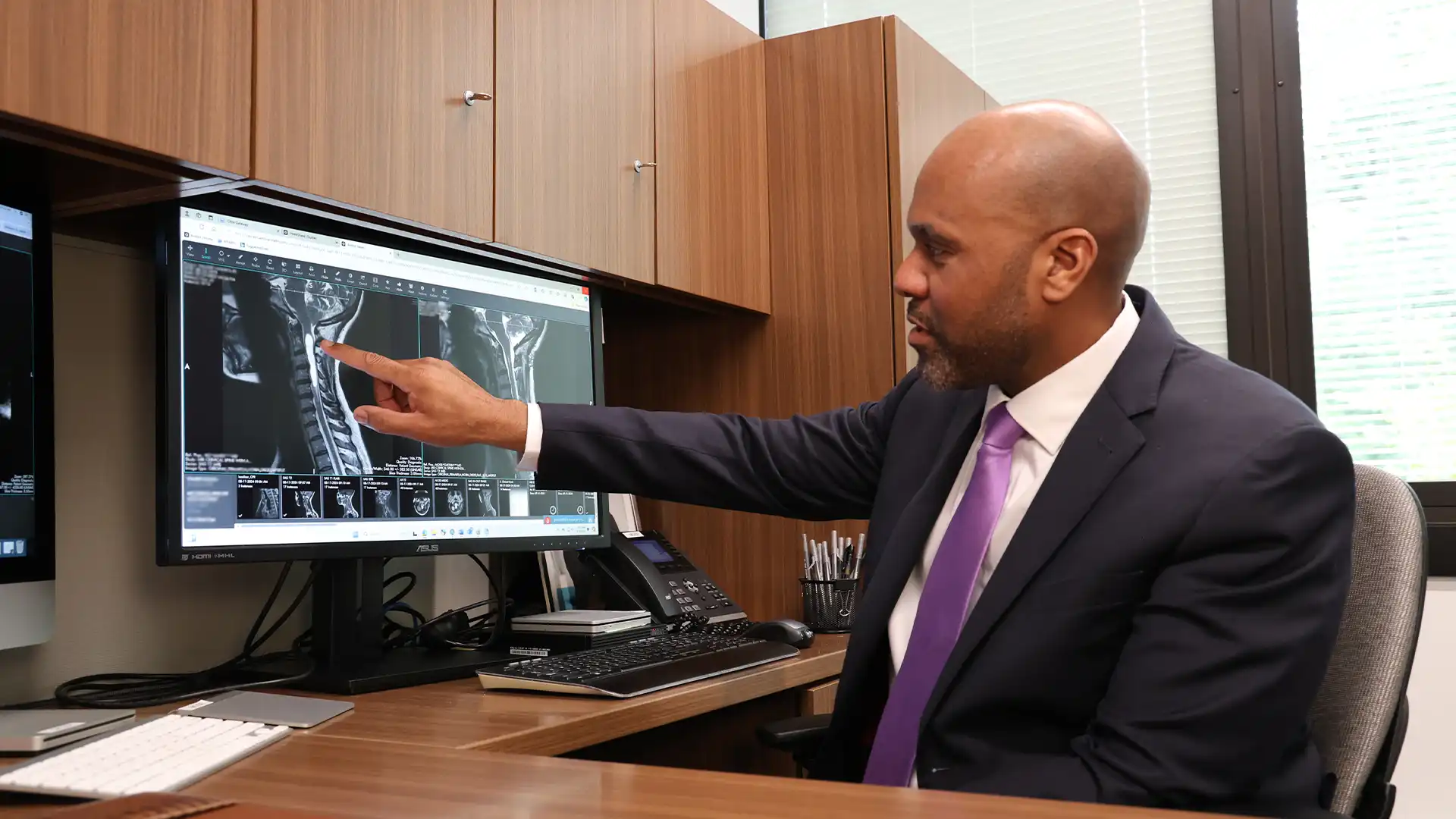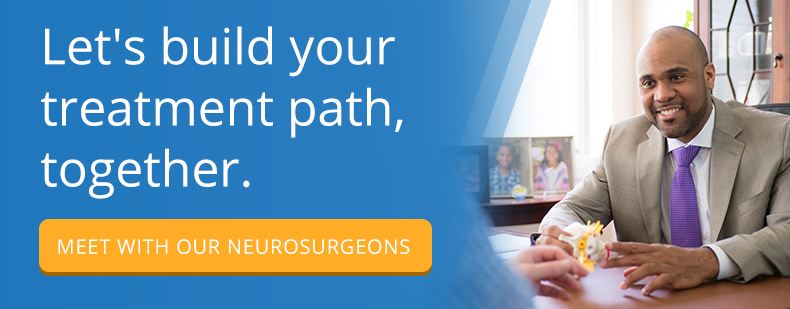Whether you already have your procedure scheduled or are still learning about your treatment options, educating yourself is a great way to feel more comfortable with Chiari malformation. Surgery is one way of treating this condition that is available to patients in northern NJ. The following information will help you better understand your condition, different surgical options and what to expect after undergoing Chiari malformation surgery.
About Chiari Malformation
Your Chiari malformation developed before you were born, as your brain and skull were growing. Typically, the brain and skull develop together and fit together perfectly, with just enough room for the delicate brain. However, sometimes part of the skull does not grow as much as it should and there is not enough room for the brain.
In your case, the area at the back of the skull did not grow large enough to hold the posterior area of the brain, called the cerebellum. As a result, the cerebellum is forced down through a hole at the base of the skull, the foramen magnum. This is where the spinal cord and other important structures pass through. As a result, the cerebellar tonsils (the area extending outside of the skull) can put pressure on the spinal cord and/or block the foramen magnum, which can cause a backup of cerebrospinal fluid (CSF).
Chiari Malformation Surgery Options
Generally speaking, the treatment goal of Chiari decompression surgery is to create more space, relieving pressure and preventing further damage. This will also help resolve any symptoms you are experiencing, though your doctor is in the best position to discuss expected outcomes in your specific case.
There are two types of Chiari malformation surgery: traditional surgery and minimally invasive surgery. Both are available to patients in the Tristate area, and many patients who are candidates for traditional surgery can also benefit from a minimally invasive approach. Understanding the difference between the two will be important as you learn about what to expect after undergoing Chiari malformation surgery.
Traditional Chiari Malformation Surgery Options
Chiari malformation can be treated using a traditional surgical approach, which means using standard surgical instruments and techniques. There are different specific surgeries, which include:
- Dural opening Chiari decompression
- Cervical laminectomy
- Spinal fusion
- Transnasal/transoral decompression
- Cerebrospinal fluid diversion
Each of these procedures uses different approaches to treat Chiari malformation and are often used in combination. These traditional surgeries are more invasive and will have a longer recovery time, as described further on.
Minimally Invasive Chiari Malformation Surgery Options
There are also minimally invasive Chiari malformation treatment options to NJ patients. These procedures accomplish the same goals: creating space, relieving pressure and impingement. However, during these procedures, the neurosurgeon uses specialized instruments and microscopic visualization to perform the treatment. This allows for much smaller incisions and less disruption of the surrounding tissues. Minimally invasive procedures include:
Because of their minimally invasive approach, the recovery following these procedures is faster than traditional Chiari malformation surgeries, as discussed below.
After Undergoing Chiari Malformation Surgery
While your surgeon will be the best person to discuss your individual recovery outlook, it can be helpful to know what to expect after undergoing Chiari malformation surgery. Any procedure you have will take place in a hospital setting while you are asleep under general anesthesia. For the first 24 hours after your procedure, you will likely remain in the intensive care unit before being transferred to the neurosurgical floor. Most patients will spend approximately 2-4 days recovering in the hospital following traditional Chiari malformation. Generally speaking, you will spend less time in the hospital following a minimally invasive procedure.
Similarly, recovery at home will be quicker after a minimally invasive surgery. Following traditional Chiari malformation surgery, you can expect to be on activity restrictions for 6-12 weeks. This includes limits on exercise, lifting and household activities, which are gradually lifted as your body heals. It will be important to rest during this time, and you may wish to have someone help you with errands and chores around the home. Most patients are able to return to work after 6-12 weeks, though this will vary based on your individual circumstances.
Regardless of which procedures your doctor recommends, you will have follow-up visits with your doctor during your recovery. Your follow-up schedule will be created by your doctors and tailored to your individual condition. This includes visits to remove any staples or sutures, to assess your symptom resolution and to monitor for any side effects. Your doctor will also allow you to increase your activity levels based on your follow-up appointments. He or she may also order imaging to determine whether you require any further treatments.
Your Personal Recovery Process
Now that you have a deeper understanding of what to expect after undergoing Chiari malformation surgery, it is important to continue the discussion with your personal surgeon. He or she will be the best person to discuss what to expect in your specific case based on your treatment plan and individual condition. No two patients are alike, your doctor will be able to give you information about how long your recovery may take and what to expect regarding your symptoms.
As you move forward along your treatment path, continue to educate yourself about your condition and upcoming procedure. Many patients find that having an understanding of the process and what to expect before, during and after treatment helps provide peace of mind along the way. That reassurance translates into reduced stress, allowing you to focus your energy on the healing process when your body needs it most.


